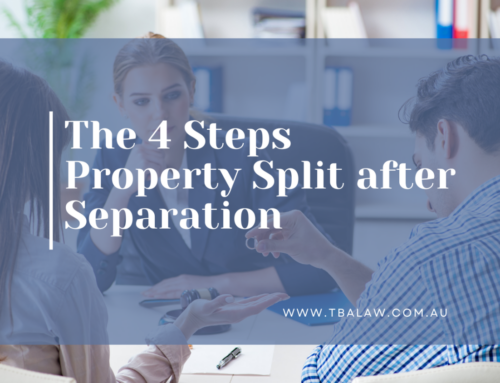How Much Will I Get?
by Lajita Allan-Agnew
When a relationship breaks down, you soon realise that you must separate your living arrangements, finances and decide who gets to keep what. Unfortunately, there is no formula used to divide your property and what rings true for one relationship will not apply in another.
The Family Law Act 1975 sets out the general principles the court considers when deciding financial disputes after the breakdown of a marriage. The general principles are the same and are based on:

Working out what you’ve got and what you owe, that is your assets and debts and what they are worth.
In order to identify and place a value on the total asset pool, you and your now ex partner need to include all of the assets, liabilities, and financial resources available to each of you. “All Assets” means anything that is owned jointly, independently or with someone else. Irrelevant of how it is owned, it must be included in the asset pool.
The direct financial contributions by each party to the marriage or de facto relationship.
Financial contributions are not restricted to ‘cash’ that either of you brought into the relationship or earned throughout the course of the relationship. Financial contributions can come in different forms such as a sum of money gifted to you by your family or money or property received by either of you from an inheritance.
The non-financial contributions to the marriage or de facto relationship.
Non-financial contributions refer to the efforts of each party, which have increased the value of the asset pool. The most common non-financial contributions relate to the improvement of the family home or real estate owned by the parties’ own labour. Common examples include repainting, renovating, and landscaping. Homemaker and/or parent contributions refer to thecontributions of each party to the domestic duties of the household as well as the daily running of the household. This includes, but is not limited to, cooking, cleaning, and gardening. Parent contributions are again self-explanatory and relate to the duties performed in a parenting capacity which in most cases result in one party taking time off work to look after young children and then returning to work on a part time basis as the children grow older. No one contribution outweighs the other and as such the Courts exercise careful consideration of the relevant contributions of each case individually when assessing what weight should be placed on each of the parties’ contributions.
Future requirements
The Court considers the future needs of both parties. In doing so the Courts looks at the following things:
-
- the age and state of health of each of the parties;
- the income, property and financial resources of each of the parties and their capacity for employment;
- who has the care of any child of the relationship under the age of 18 years;
- commitments necessary to enable a party to support himself or herself or any other person that the party has a duty to support financially;
- the eligibility of either party for a pension or superannuation;
- the standard of living that is reasonable in the circumstances;
- the extent to which the earning capacity of a party has been affected by the relationship; and,
- if either party is living with somebody else, what the financial circumstances of their household are
Once the Court has taken all of the above into consideration, it then assesses whether or not it would be fair and reasonable to make a property division order and what the terms of that order will be.
When a relationship ends and you need to separate your assets, there is no one fits all formula and we at TBA Law would be pleased to assist you with legal advice and guidance on what would be fair and reasonable for you.





Leave A Comment